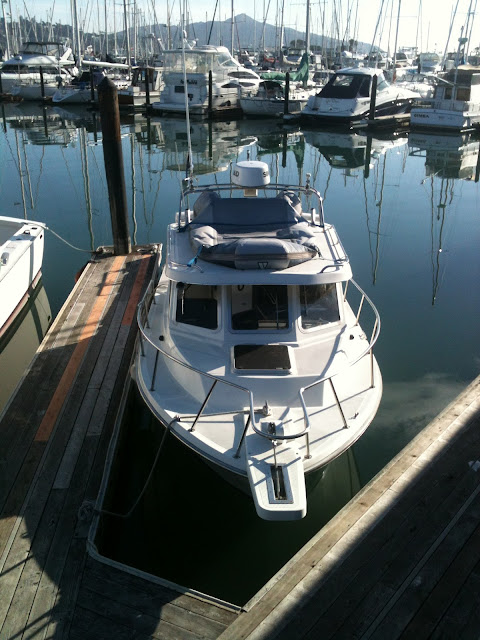| Photo of inside the Cathedral by Ken Kaminesky |
You try imagining what the poor girl went through.
Thirteen horrific tortures. That is, if the stories are true. If the surviving
lines written down in the 29 verses of the Sequence some 1135 years ago are
even vaguely accurate. But how could they not be? The Sequence of Santa Eulalia
is the earliest surviving piece of French hagiography, written by monks,
blessed by God, surviving extant for nearly a millennium about a defiant young
girl from the Catalan region of Spain.
How did that list of 13 run? Flesh torn with hooks.
Placed in a box with hungry fleas. Tiny breasts sliced off. Or was that before
the fleas? Wounds sprinkled with boiling oil. And more. So much more. And yet
she did not recant. She had petitioned a Roman governor to be fairer in the
treatment of Christians. Apparently the governor did not care to be lectured by
a little girl, so he sentenced her to as many gruesome punishments as years she
had lived upon the earth.
What was next? Lashes across her back. Put inside a
barrel with glass and nails and rolled down the slope behind where the
cathedral now stands. Still nothing to recant. How broken she must have been.
The warm blood flowing freely, the pain more intense than any child should ever
endure. They say women have a higher tolerance for pain than men. The thought
passes through your head as you climb the steps towards the cathedral, but this
amount of agony goes well beyond the simple definition of the sexes. This is
someone chosen by God for His purpose on earth. This is the suffering of a Saint.
Eulalia’s mutilated body was
originally interred in the church of Santa
Maria de les Arenes (St. Mary of the Sands, now St. Mary of the Sea). She
was hidden in 713 during the Moorish Umayyad conquest of Spain, and only recovered in 878. In
1339, she was moved to an alabaster sarcophagus in
the crypt of this cathedral where she rests to this day.
In the 14th century, with heavy construction
still in progress, it would have appeared much less impressive than it does on
this crisp evening. The towering spires must certainly be sharp to the touch.
The pointed archways are layered and decorated ornately down to the finest
detail. Based on a recommendation from a friend, you made your visit at sunset.
The dipping sun, slowly setting beyond the Muntanyes
d’Ordal, lights up the front façade in a spectacular glow of deep reds and burnt
oranges. Once inside, gathering reverence from the stillness,
lines of the Eulalia hymn flutter quietly from your lips:
. . . Noble of parentage Eulalia
More
noble still in the style of her death . . .
The girl was nailed to an X-cross along what is today
the Placa del Pedro in the Raval
neighborhood of Barcelona. You notice the “X” symbols carved into each pew you
walk past. Again, the thought of her agony nearly overwhelms you as you
approach the stairwell. At the bottom of the steps is where you will find her
golden tomb.
There are other pilgrims here, young and old, having travelled to see their
patron Saint, to ask for blessings, seek guidance, find inspiration.
You pay little heed to
them as you descend the steps and pause at the edge of the deep red carpet that
surrounds her final resting place. Candles surround the vault. A statue of the Savior
surveys the scene from above, giving both His blessing and approval.
. . . Counting her torture a boon to
herself. . .
The thirteen-year-old Eulalia was executed during the
repressive rule of the pious Diocletian (Roman emperor from 284-305 AD),
possibly around 304. According the verses, the girl resisted the pagan threats,
bribery, and immense torture by Diocletian’s lesser co-emperor of the time,
Maximilian. Somehow she even managed to survive immolation at the stake before
the Romans finally decided to stop playing games. They decapitated the child by
sword, her tiny head falling to the ground like a tossed sandwich wrapper. But
God would get the final say in this standoff. It is claimed, after her head was
removed, a white dove was spotted escaping from the girl’s lax mouth, ascending
to heaven to join her saintly peers.
The Cathedral is humbling. Its full appellation is the
Cathedral of the Holy Cross and Santa Eulalia. Construction of this Gothic
masterpiece started in 1280 and was not completed until 1420 with a new façade
and central tower added by 1913. The delays were due primarily to ongoing civil
wars and troublesome bouts of the Black Death. Today the cathedral has become
one of the signature stops within the city of Barcelona.
You complete your
prayers, end your reflection, and make your way slowly back up the steps,
through the chapel, and out the arching doorway. Other patrons are still
quietly shuffling in. One tourist is taking pictures and smiling. You think to
yourself they probably don’t understand the significance of this place or what
it means to the Barcelonese. What the young girl went through to remain true to
her faith. But you understand. You try your best to wipe the gruesome images
from your mind as you step out into the early evening air of the city’s Gothic
Quarter. The bustling traffic of evening is beginning to hum. A hint of the
Mediterranean rides on the breeze and your spirits finally begin to lift.
 |
| Relief of Eulalia by Bartolomé Ordóñez |










































































